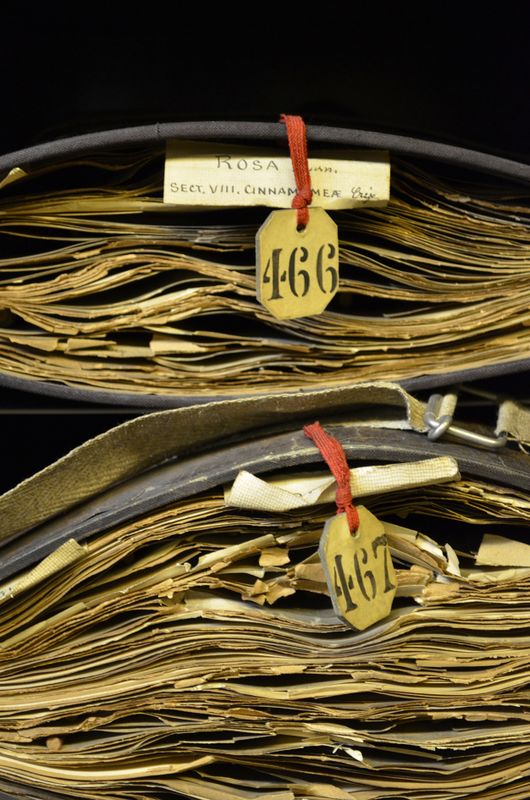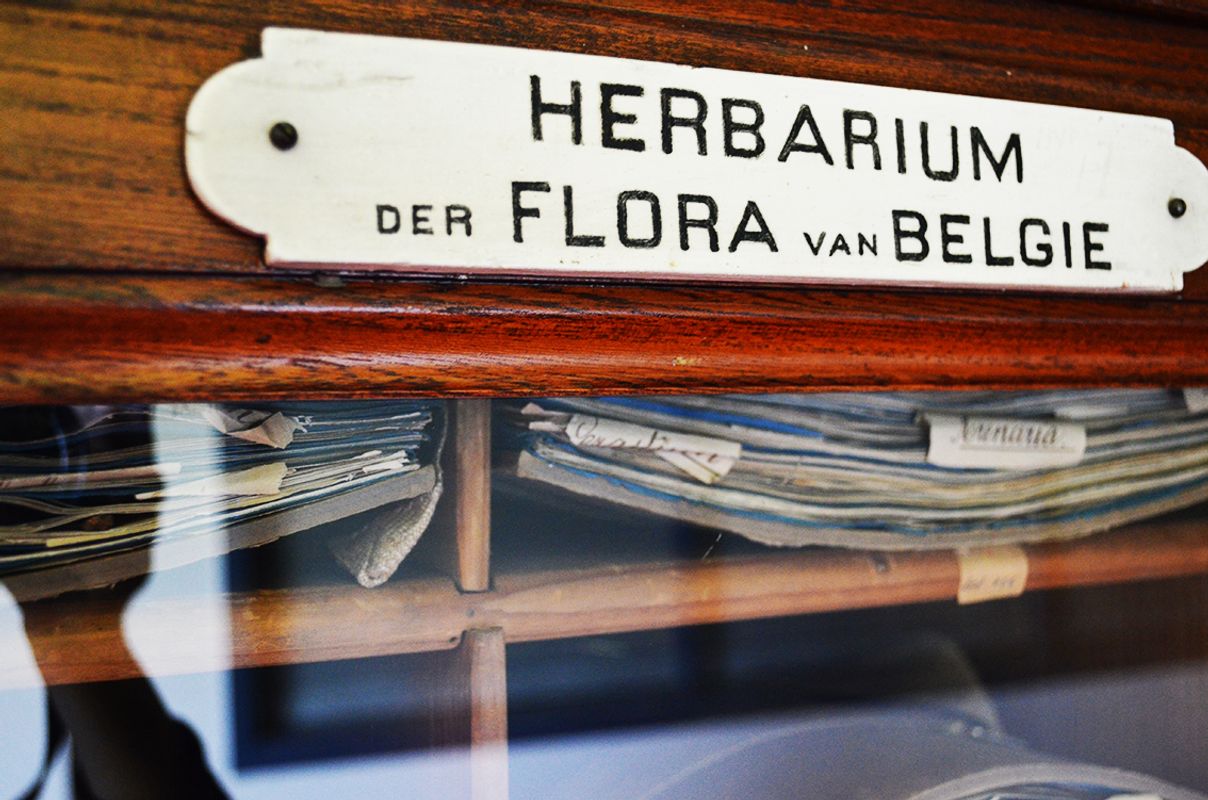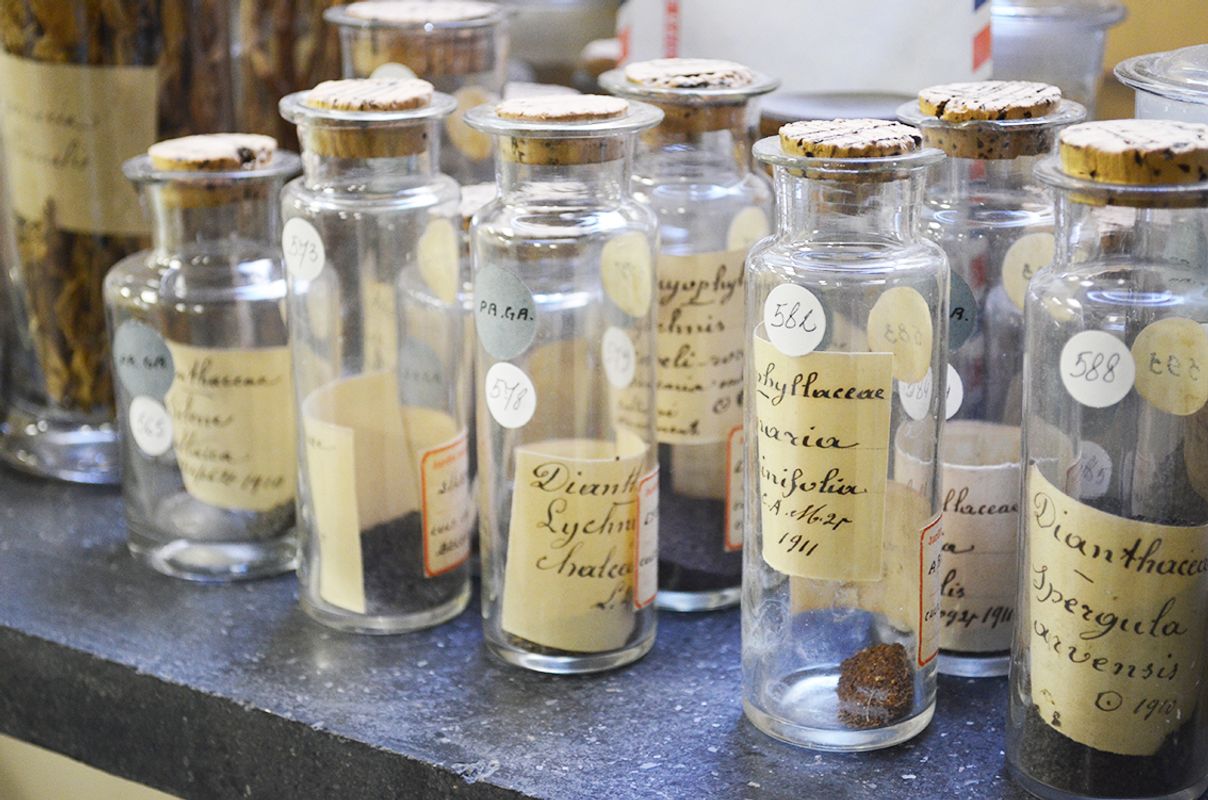
Our herbarium collections
Our herbarium collections cover a wide range of plant groups: algae and diatoms; slime moulds and mushrooms; mosses, lichens, and ferns; gymnosperms and flowering plants.
The collections mainly consist of herbarium sheets, but they also include tissue collections for genetic analyses, fluid-preserved collections for morphological research, a collection of dried fruits and seeds, microscopic preparations, a wood and bark collection, and historic museum collections.
Although collection items come from all over the world, the focus is on Southwestern Europe and tropical Africa. Our collection is the world reference for Central Africa. In addition, we have important collections from the nineteenth century: they belonged to, among others, leading botanists such as von Martius, Sieber-von Reichenbach, and Van Heurck.
In addition to these important private herbaria, the collection also consists of very important reference items (types) for Latin America, a nineteenth-century rose herbarium belonging to François Crépin, and a twenty-first century blackberry herbarium. Von Martius’ palm herbarium is also unique and highly valuable.
In total, the Herbarium houses around 4 million collection items. In recent years, some 1.5 million objects have been digitalized, which means we now have images and associated data for a large part of the collection. Everyone can consult these collections via the virtual herbarium. The public can also help to enter the data for our collection via our citizens platform DOEDAT.






